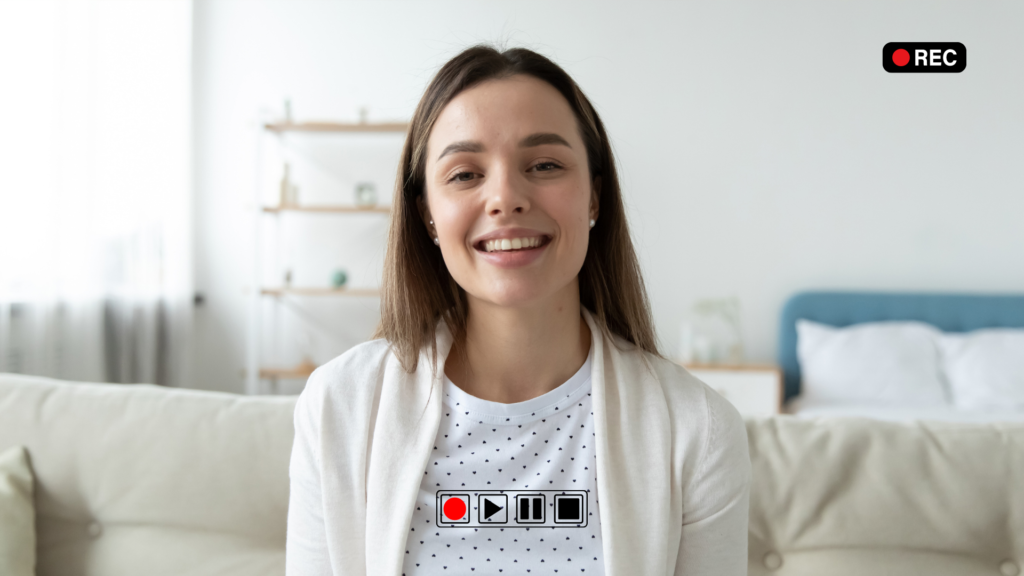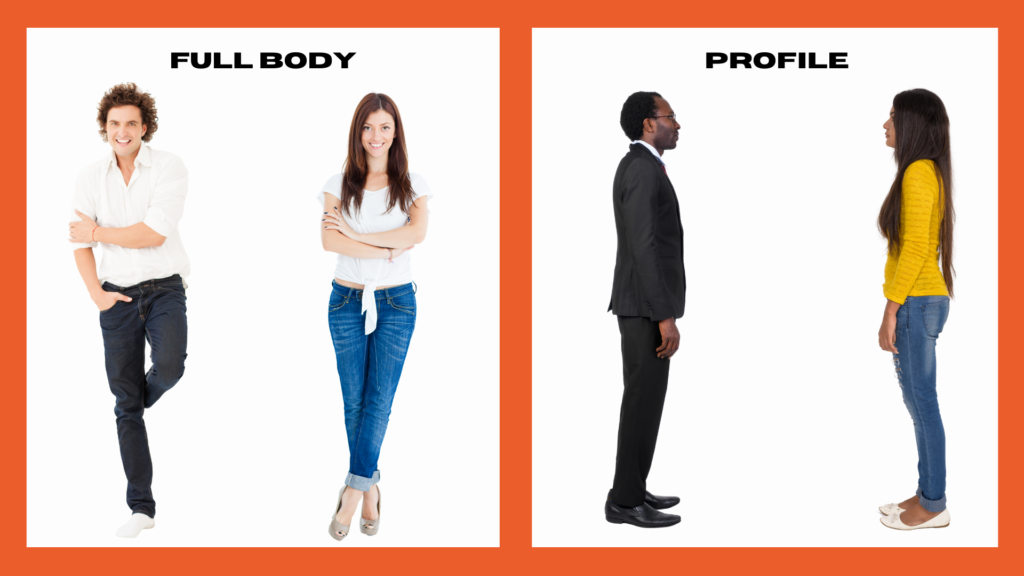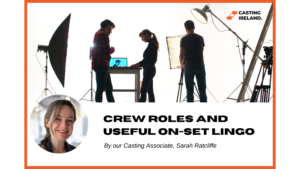Hello there! I am Bianca, Head of Casting at Casting Ireland and Brand Manager for The Production People. Over the last couple of months, we have received countless requests from our clients for self-taped auditions.
To help you create the best self-tape possible, we’re compiling our top tips and tricks. So, let’s get started. Lights, camera, action!

Use the resources you have available
Before you start recording, evaluate your surroundings. Are you in a quiet space? Are your surroundings neutral or are there distractions? Are you sitting comfortably? Identify any changes that need to be made. For example:
-Tripod: If you don’t have one, a stack of books works wonders.
-Camera: Either a professional camera, or your phone will do the job.
-Lighting: If you do not have any lighting gear, sit close to the camera and try to sit by a window or make use of other light sources. Ensure you sit facing the window, rather than risk overexposure by having the sun at your back. Avoid harsh light and anything that casts too much shadow on your face.
-Audio: Choose a quiet room. Turn off all devices. Not just your phone, but anything else that makes distracting noises, for example, washing machines or dehumidifiers. Ensure your pets and children are looked after in a separate room to minimise your chances of being interrupted.
Finally, don’t forget to test your audio. Is your microphone picking up sound? If not, you may need to consider external hardware. With so many YouTubers, influencers, vloggers, streamers, professional gamers, and TikTokers creating content nowadays, it’s easier to find affordable lapel mics, pop shields, ring lights, and tripods than ever before. So, consider taking a quick look online!
-Background: It’s best to shoot against a neutral background, where possible. Or at least in a space that isn’t too cluttered. You don’t want anything to distract from your performance. Placing yourself in front of a plain wall with soft light is ideal.
Practice makes perfect
Read the character description and the scene you will be interpreting several times. Reflecting on the context of the piece will allow you to deliver a better, more believable performance.
We strongly encourage you to memorise your lines. That way, you won’t be holding the script in your hand and glancing down throughout the audition. You don’t want to shatter the illusion. In addition, by nailing your lines in advance, there’ll be a lot less footage to wade through, review, and delete afterwards.
Pro tip: If you have practice using a teleprompter, you can definitely make use of it during your audition. Just don’t get too distracted by trying to read the text correctly. It would be a real shame for your performance to suffer. Practice makes perfect!

Do some trials
Tape yourself as many times as you deem necessary and re-watch the footage. Analyse it! Make note of movements, acting styles, and line deliveries that are most compelling.
It’s a good way to check if you’re speaking loudly and/or clearly enough. By doubly confirming these variables, you avoid having to sacrifice a great take because you can’t hear yourself properly in the recording.
Then, if you need to change anything around you, like taking a photograph off the wall to minimise distractions, improve your light source, or adjust the camera angle, this is also an excellent opportunity to do so.
Pro tip: If possible, ensure your clothing matches that of your character. Or at least, what you would image they’d wear on screen. For example, if you are auditioning to play a WWII soldier, try wearing army patterns. In every case, avoid wearing jewellery that moves, jangles, or catches the light.
Now’s your moment to shine!
Now you’re ready to film your self-tape! Always start by introducing yourself. You will typically receive instructions about what information to include in your slate via email. Be sure and read them carefully.
Explaining Industry Lingo: Introducing yourself in an audition or self-tape is called “slating” and the introduction is called a “slate”. If you’re asked to do a “tail slate” that means your slate must appear at the end of the tape, rather than the beginning.
If no specific instructions have been provided, state your name, agency, nationality, and age. After that, mention the part you are auditioning for, and something specific to the role (i.e., if you speak Spanish). You can say something like this:
“Hi, my name is Bianca Vertiz and I’m represented by Casting Ireland. I am 28 years old and I come from Mexico City so I can speak Spanish fluently. I am auditioning for the role of Mariana Vergara”
Your slate is the first impression casters/producers will receive. Tou should not slate in character. Just be yourself!
Sometimes, your slate instructions might mention Full Body or Profiles.
“Profiles“ mean they would like you to turn to your left, then your right. This allows them to see how you look from the side. “Full Body” means they’d like to see your full stature, from head to toe. This allows them to assess your height and proportions. Check out the images below for further clarity:

Sending your tape
Once happy with your tape, edit it down. You likely won’t need to use dedicated editing software for this as most phones and cameras allow you to trim off excess footage. However, if you’re needing to do something slightly more complicated – for example, add multiple clips together – there are countless free video editing software programs available. Many of these are specifically designed for beginners, such as iMovie. So, don’t feel intimidated as you don’t need to be tech savvy to figure out their basic functions!
After that, make sure you saved your tape properly. Watch it again, all the way through, before sending it to us / the casting agent. Ensure you’re using the requested video format, if applicable.
You can use FTP services such as WeTransfer or share the file via Google Drive, Microsoft OneDrive, or Dropbox. Sometimes Producers ask you to send your tape on a specific platform, so heed these guidelines. If you send it using a different platform, your tape may not be viewed be viewed at all! So, don’t let all your hard work go to waste.
*************************************************************************
If you’re in need of Extras, Actors, or Models for your next Creative or Commercial Project, get in touch. We’d love to help. Simply email info@castingireland.ie or call us on (01) 634 3112.






